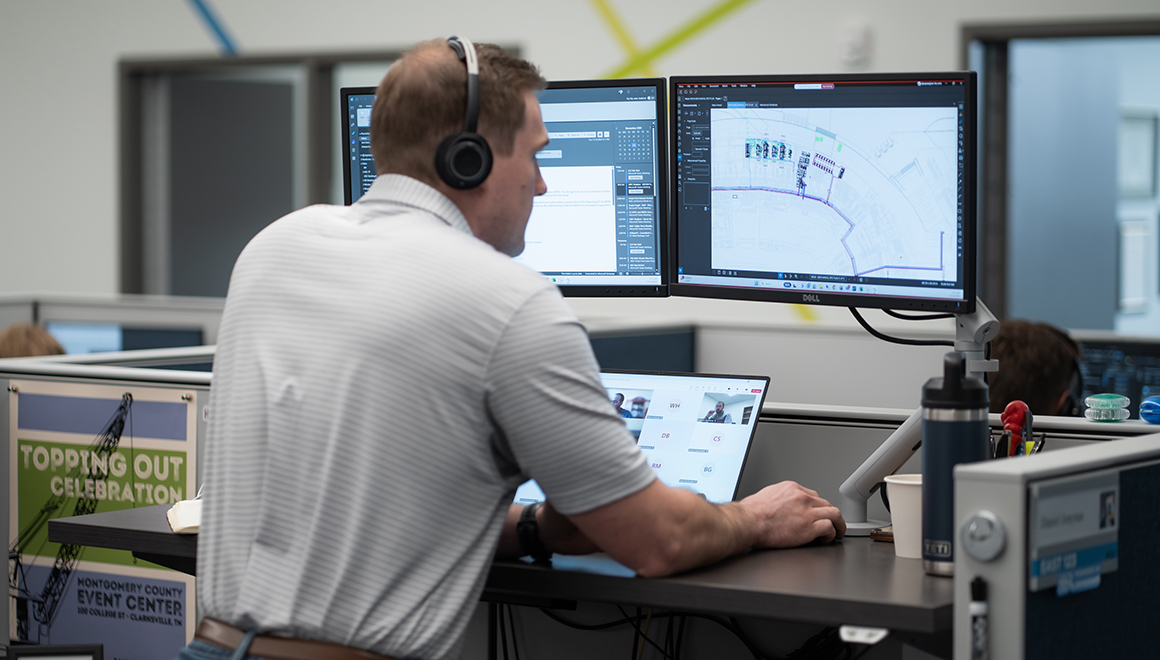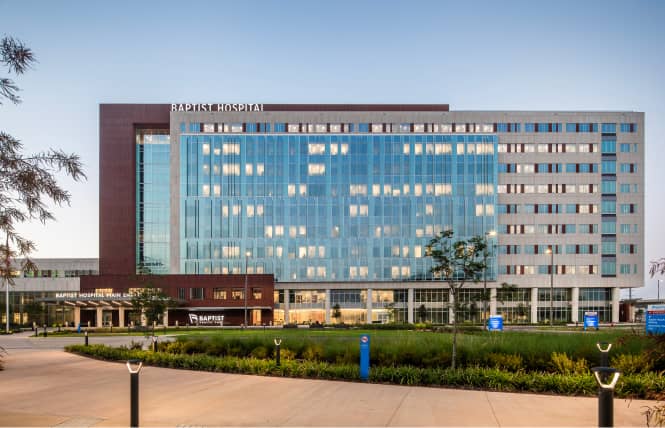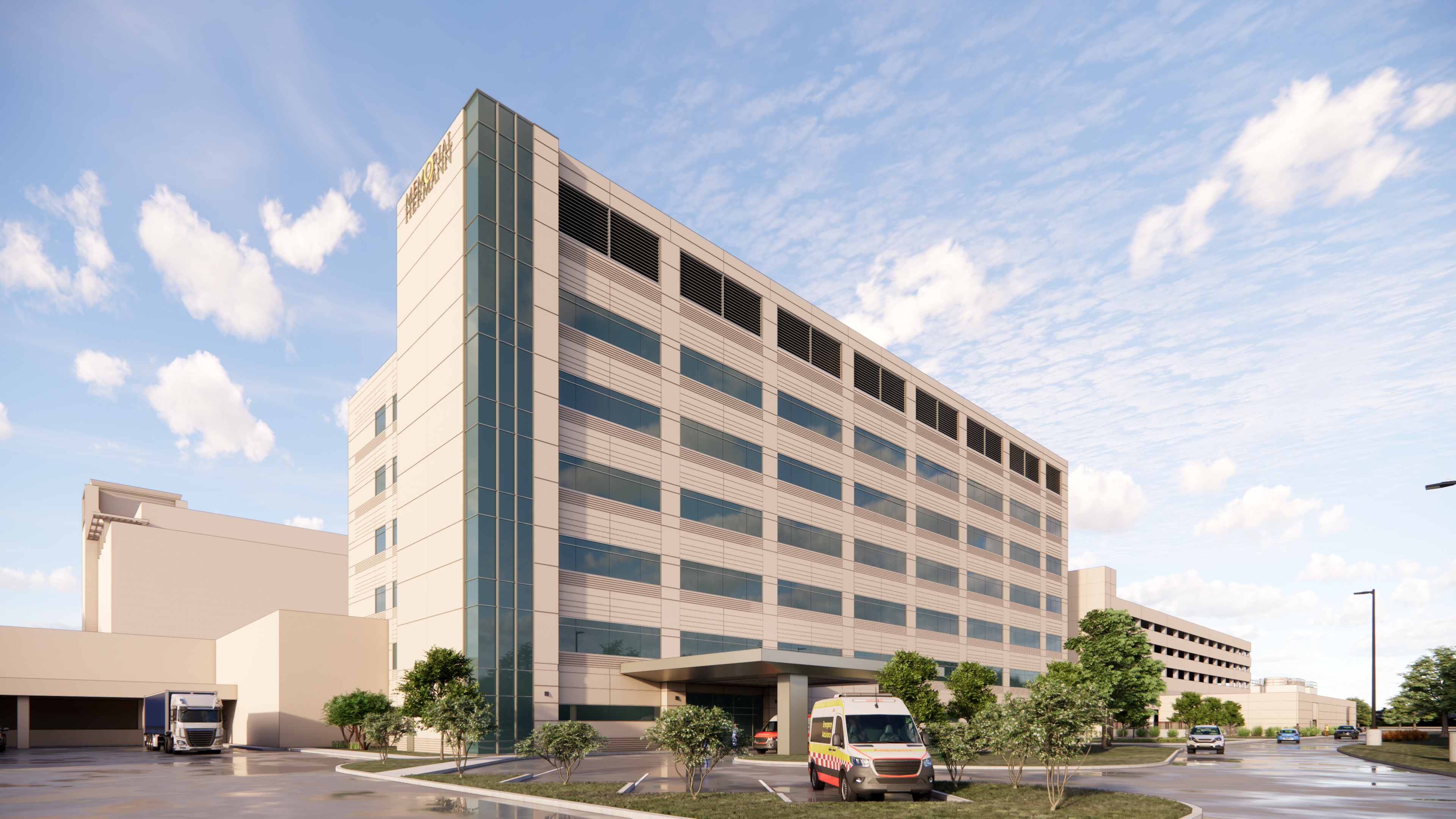From inventory to move management: Providing comprehensive equipment planning solutions for the 208,562 SF expansion of an at-capacity hospital.
With more patients than beds available in its emergency department, Memorial Hermann Sugar Land Hospital is undertaking an expansion effort that includes a 29,300 SF new emergency department, a 25,100 SF new med-surg floor, and a 15,800 SF new NICU floor that will increase the existing NICU from an eight-bed Level II to a 16-bed Level III NICU. This new patient tower is slated to open by 2027.
Full-Service MEQ Solutions
From equipment inventory and design to procurement and move management, SSR’s medical equipment (MEQ) team is providing comprehensive equipment solutions for the duration of this project. At the start, we inventoried existing medical equipment, surveying both the facility and its users to determine what equipment needs were being met and what needs remained. Additionally, equipment needs were considered within the context of the desired flow of hospital spaces.
One notable example of this occurred with the redesign of Memorial Hermann Sugar Land’s emergency department trauma rooms. The existing trauma rooms follow a standard flow with most equipment being built out of the head wall. New designs create a more flexible flow for clinical and support staff by transferring medical gas, data, and power ports to an equipment boom. Hanging from the ceiling, this boom can be maneuvered throughout the room for more versatile access.
With a budget of nearly $19 million for MEQ alone, the project has involved many moving parts and stakeholders. With many eyes on this project, we have prioritized building synergy among the overall team and assuring the team’s trust in our expertise to manage every equipment detail from selecting trash bins to MRI machines.
Equipping Memorial Hermann to Provide Critical Neonatal Care
While many hospitals have Neonatal Intensive Care Units (NICU), not every NICU is built to provide critical care. Classified by the American Academy of Pediatrics (AAP), Level I NICUs deliver basic care for healthy full-term babies—describing the standard level of nursery care available at most hospitals that deliver babies. Level II NICUs care for babies typically born at 32-35 weeks’ gestation who have moderate medical issues. Level III NICUs provide critical care for babies born before 32 weeks’ gestation or babies with specialized medical conditions, regardless of age. Level IV offers the highest level of neonatal care, providing services and major surgeries for the most complex and critically ill newborns.
In moving from a Level II to and Level III NICU, Memorial Hermann will be able to provide an advanced degree of critical care—requiring specialized equipment and specifications. After taking inventory of the hospital’s existing Level II equipment, our team determined what new equipment was needed to comply with the Level III requirements. These requirements have included special ventilators sized to fit preterm infants and other life support equipment, isolette incubators, along with advanced monitoring systems.
“It’s remarkable that our work is contributing to giving the littlest lives in our community a chance to heal. As a new mom, this work has been especially important to me.”
Megan Patronella
Medical Equipment Planner
Reviewing Designs in 3D
To give Memorial Hermann a realistic understanding of the flow of new designs, we worked with our architectural partner to create 3D-printed figurines of medical equipment placed on a scaled floor plan. In design review discussions that included Memorial Hermann’s project manager and user groups, owner’s representatives, and project team members, the team was able to move the figurines around and test equipment configurations in real-time. When we said, “this is where the doctor’s stool will be placed” or “the anesthesia machine will be located here,” users could tangibly grasp how the equipment worked within the flow of a room.
In the instance of reviewing the flow of an operating room design, while playing with equipment orientation, the team realized a door needed to be repositioned to allow enough room for patients to be brought in for surgery. By facilitating this kind of real-time troubleshooting with users during design versus construction, we saved time and money down the road.
Responding to a Growing Community’s Needs
Ultimately, every single one of us will spend time in a hospital. With its new patient tower, Memorial Hermann Sugar Land is seeking to make this experience more comfortable and accessible. While Fort Bend County’s community is expected to climb to one million by 2027, this expansion will allow patients to experience reduced wait times and greater access to private beds rather than overflow care. The new NICU will also provide more local families access to critical neonatal care.



